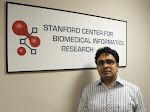






We had a SKOS file. we did not have any mappings with other thesauri. One day my supervisor returned from Luxembourg and he told me and Gudrun Johannsen "we have to do something". I took the words very seriously and started mapping between different resources. At the beginning we published 20,000 mapping links with the AGROVOC. At last the final day came to publish the LOD. You can find the news in here
http://aims.fao.org/news/agrovoc-thesaurus-released-linked-open-data
This is one of my big baby in my career after my PhD. I am very proud of the member of this LOD activities. Now, we are the largest and first Agriculture Linked Open Data in the World. ..
"When I close my eyes, i could see the AGROVOC links moving here and there" .......
So, I parsed all the files and put into the database. Later on, I run my existing routine which was build on INRIA mapping API. I considered 8 eight element level matchers in order to perform these matching tasks. The results of all mappings had been verified by a domain expert . Here is an example,
The concept “Europe” from AGROVOC is mapped with NAL, EUROVOC, LCSH, GEMET and STW thesauri.
One of the goal is to make mother thesaurus as a reference vocabulary so that it can be used to retrieve the information, managing the information. Furthermore, it can be used also further mapping purposes taking into account as background knowledge. It is a new face of thesauri.
Even though the practice of metadata were changed from catalogue cards to machine-readable formats, for a long time metadata information is stored in repositories as electronic records. During the recent year, the World Wide Web is moving from the web of documents to the web of data. The metadata information is moving from merely machine-readable towards machine-processable, where it is essential to break the record and repository silos and make data (especially metadata) into machine understandable pieces. We present information about the data using the RDF (Resource Description Framework) which provides a data model for presenting metadata as machine-understandable and –processable triple statements (i.e., subject, object, predicate). For example, Adam (subject) is from (predicate) Peru(object). The subject of a triple is the URI (Uniform Resource Identifier) identifying the described resource, a predicate is the existing relationship between subject and object, and an object is a literal value or the URI of resources that is somehow related to the subject. In the above example, “Adam” is a person and “Peru” is a country. Although they represent totally different metadata, they are linked through the predicate (properties) and made it possible to gain the data and information from Adam to Peru such as the population, environment, currency, culture etc. of Peru. Furthermore, the information will be connected into the Linked Open Data (LOD) cloud where anybody can join, put their data and access the others information. This can be used by UN organizations, and play the role of one family for providing the services to the world. The linked data will have an impact on e-science, e-government, and e-agriculture.
